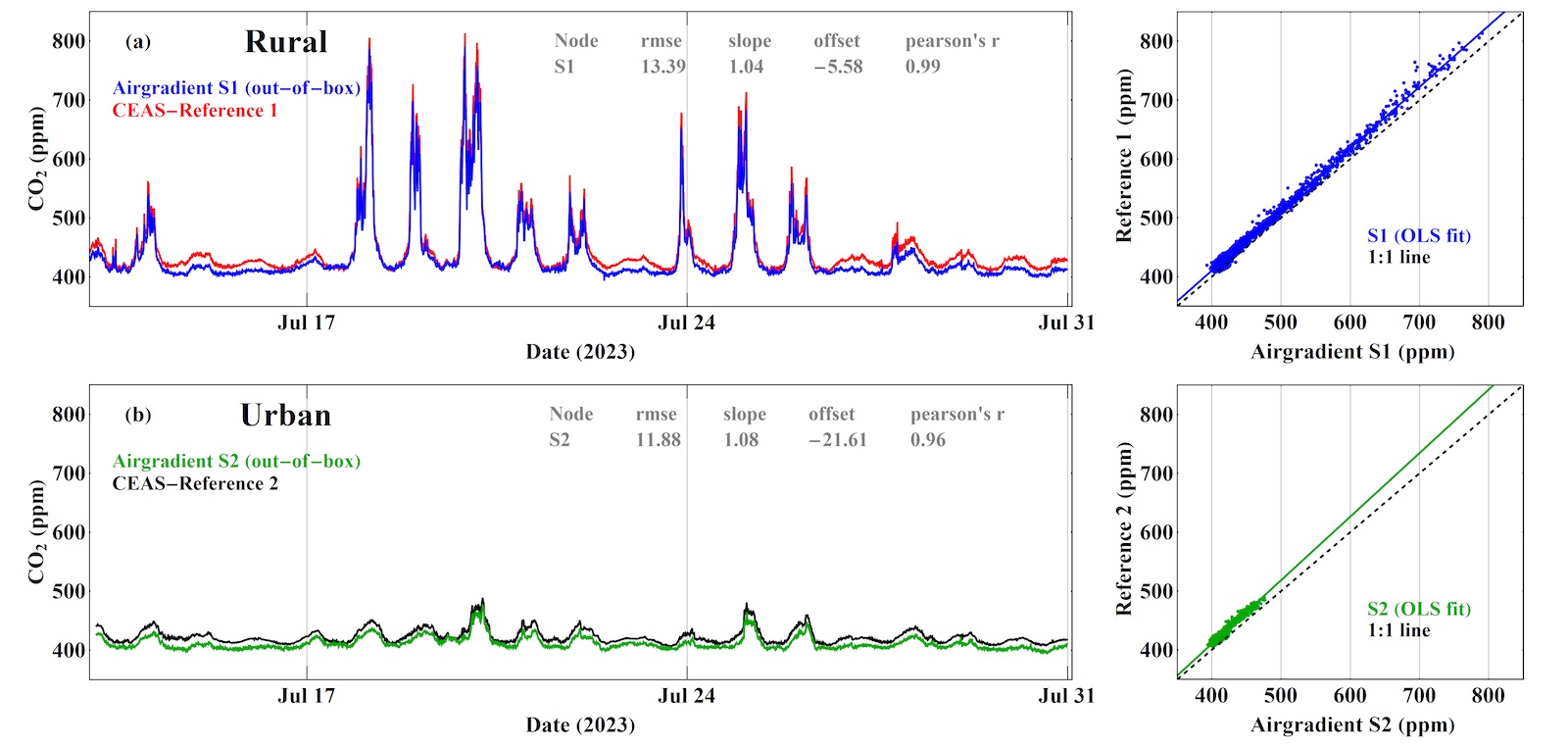Open and Accurate Air Quality Monitors
We design professional, accurate and long-lasting air quality monitors that are open-source and open-hardware so that you have full control on how you want to use the monitor.
Learn MoreWe are working with researchers at the University of Cambridge on outdoor CO2 monitoring using low-cost NDIR sensors. We replaced one of the PM modules of the Open Air with a SenseAir NDIR CO2 sensor. Then we compared the data from these modified Open Air units to highly accurate CO2 reference instruments at two locations, one inside a city and one in a rural field in the countryside.
Below chart shows the performance of the AirGradient Open Air monitor with CO2 module against the CEAF reference devices.

Even before applying any compensation algorithms, the performance of the low-cost CO2 sensors is very good with a high correlation to the reference instruments and only a small offset. Furthermore the CO2 sensors inside the Open Air demonstrate a very good sensitivity and excellent dynamic range for ambient applications as depicted by the remarkable agreements under low (urban) and high (rural) CO2 mixing ratios.
It is important to mention that the automatic baseline calibration has been left on for the SenseAir sensors and for some of the sensors we tested it needed some time to self calibrate to near-ambient CO2 levels.
It is good that we do not see much impact with varying humidity levels which should become visible as the reference device is humidity controlled. It appears that the ventilation design of the Open Air has positive effects in regards to humidity management inside the enclosure as previous experiments with different enclosure ventilation designs were more challenging.
We have to point out that even though we see great agreement with reference data, low-cost CO2 sensors are not good enough to measure the specific background CO2 levels of currently around 420 ppm accurately. However, there are some interesting applications because the sensors pick up local emission changes very well:
The much lower price and size of these sensors allow a much denser installation of sensor networks and with cloud based algorithms and additional parameters like wind speed and wind direction powerful mapping of regional CO2 emissions will be possible.
We are very encouraged by the above results and want to investigate this on a larger scale. Therefore, we will produce a limited number of this monitor and make it available for purchase to early adopters. It would be great if the early adopters would be willing to share their data with us and give some general information, e.g. about local emission sources so that we can analyse the data. In line with the Open Air being an open hardware design, we will share the results and analysis.
If you are interested in getting this monitor, you can pre-order it now in our online shop.
Curious about upcoming webinars, company updates, and the latest air quality trends? Sign up for our weekly newsletter and get the inside scoop delivered straight to your inbox.
Join our Newsletter
We design professional, accurate and long-lasting air quality monitors that are open-source and open-hardware so that you have full control on how you want to use the monitor.
Learn More